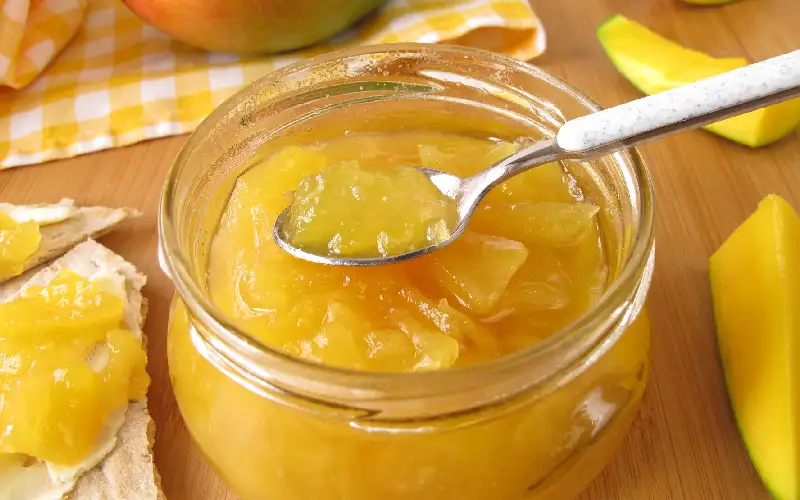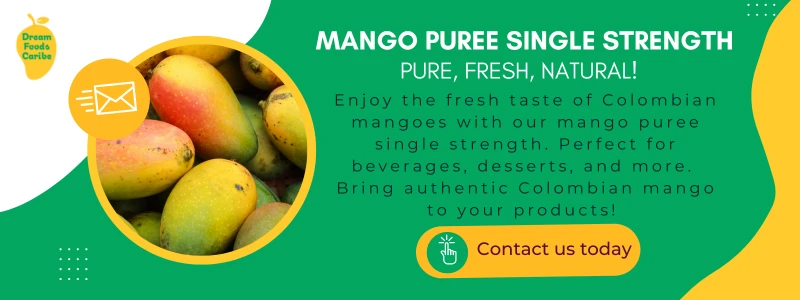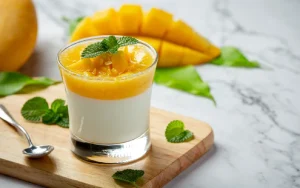Within the food industry, the production of mango jam is one of the best-known uses of this fruit. Some inputs are used to flavor the product and guarantee its quality during its manufacturing process. Best fruits, fresh or preserved, are chosen to obtain the natural flavor of the healthy and ripe fruit. In addition, sugar, and other ingredients, such as additives and preservatives, are incorporated to maintain the flavor and prolong its shelf life (Padilla et al., n.d.).
Explore these tips for crafting a commercially appealing mango jam infused with natural flavors. For manufacturers, sourcing ingredients from trusted mango puree suppliers or mango concentrate suppliers ensures quality and consistency in large-scale production.
How to achieve a naturally rich flavor in mango jam?
Typically, commercial jams undergo a process where fruits are cooked down into a pulpy consistency, resulting in a semi-liquid product. To enhance its taste profile and heighten the overall sensory characteristics of the fruit, specific proportions of food products are incorporated, obtaining a delightful sweet flavor (Sanz, 2021; Padilla et al., n.d.).
Generating that natural flavor in mango jam makes it suitable for direct consumption. Also, it can be used as an ingredient in different options, such as mango cake, mango sorbet, or mango pudding. In order to do so, it is important to take into account these suggestions (Padilla et al., n.d.; Sanz, 2021; FAO, n.d.; UNDP, 2023):
1. Use mango puree to create a natural flavored jam.
Mango puree is the edible part of the whole fruit, without peel, skin, and seeds, reduced to a puree by a sieving process. It is ideal for the manufacture of mango jam, as it preserves all the authentic flavor of the fruit. In addition, it maintains its enduring flavor and characteristic aroma. This culminates in a final product of exceptional quality, characterized by a seamlessly natural appearance.
This type of concentrate can be used as an input in the manufacture of mango sauce and mango jelly. Certainly, it is a product elaborated with fresh and healthy fruits, selected, and harvested at their optimum ripening point. For its use in the elaboration of jam, it is recommended that the following conditions are guaranteed:
- A uniform, homogeneous, and viscous consistency of the puree.
- Preservation of nutritional qualities.
- Slight fluidity to obtain a semi-liquid mixture.
- Safety, hermeticity, and integrity to guarantee the quality of the final product.
2. Giving the right proportion of sugar to mango jam
Sugar is a primary ingredient that intensifies the natural flavor of the fruit in the jam. During the cooking process, the mango puree should be mixed with the sugar in a 1:1 ratio. It is used to obtain a semi-fluid, uniform, shiny, and lump-free product. Various types of sugars can also be used to impart flavor to the product and help improve its texture.
The optimum point of the jam is achieved when the mixture reaches 65 degrees Brix (65% sugar). In this way, together with the pectin, the final product reaches a gelled consistency that maintains the texture, color, aroma, and flavor of the natural fruit.
3. Adding citric acid to balance fruit flavor
Citric acid is an additive that is added to mango jam to balance the flavor of the fruit. It is a natural antioxidant that also helps in the preservation process, prolonging the shelf life of the product. Its main function is to regulate the pH and reduce the oxidation of the fruit’s nutrients. This helps to preserve the natural flavor of the mango and helps to obtain a transparent and shiny jam. In conclusion, mango jam is a product obtained by cooking the fruit with sugar and other ingredients. For its commercialization, it is important to create the natural flavor of the fruit. Mango puree is ideal since it is made with fresh, healthy fruit at optimum ripeness. This helps to preserve the flavor of the fruit together with sugar and citric acid. Following these tips can result in a product with a more natural flavor.
Bibliographic References
- FAO (n.d.). Codex Standard for Jams, Jellies and Marmalades (CODEX STAN 296-2009).
- Padilla, M.; Campos, M.; Larios, I. and Villanueva, S. (n.d.). Elaboration of mango-based products. CIATEJ.
- UNDP (2023). Mango cultivation and marketing.
Sanz, C. (2021). Project of a jam processing industry with seasonal fruit of 644,000 kg per year of production from Ecija (Seville). Universidad Politécnica de Madrid. https://oa.upm.es/69067/1/TFG_CRISTINA_SANZ_ROLDAN.pdf







